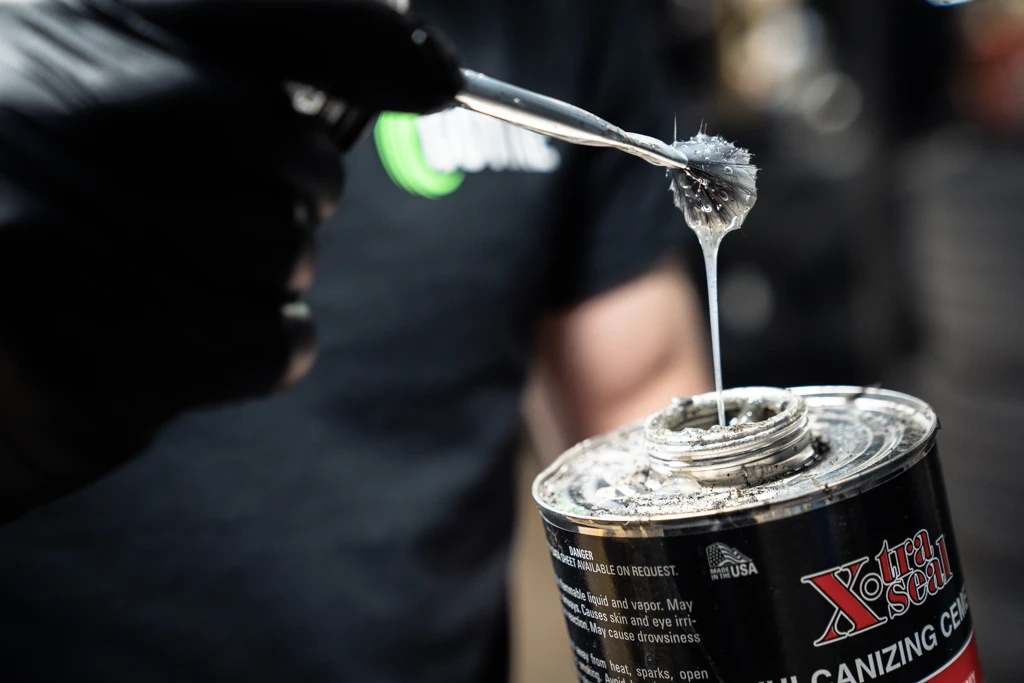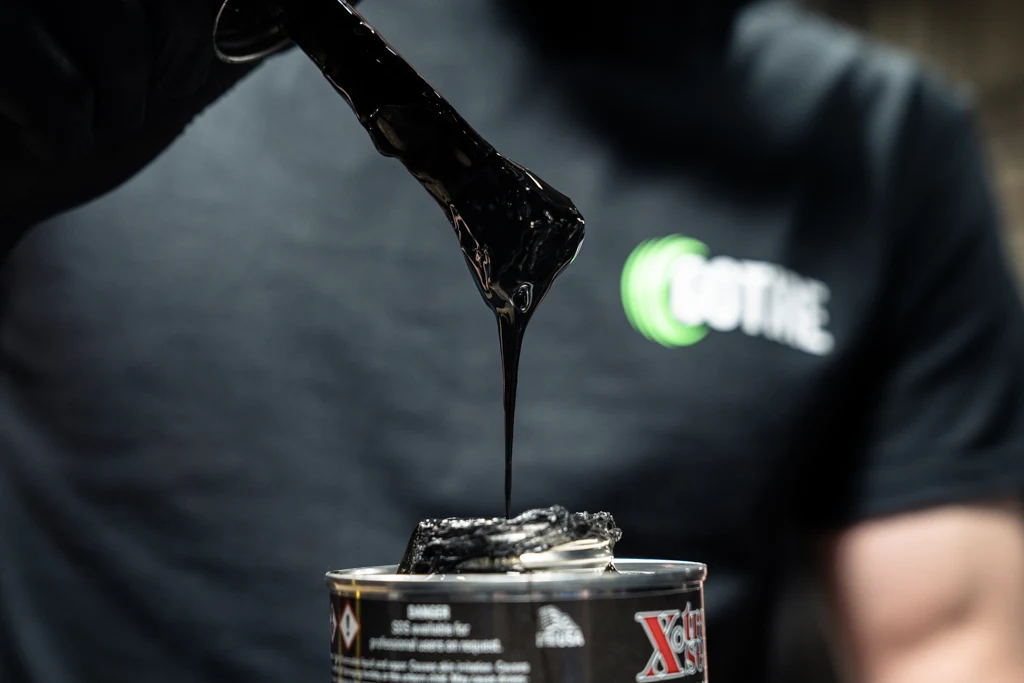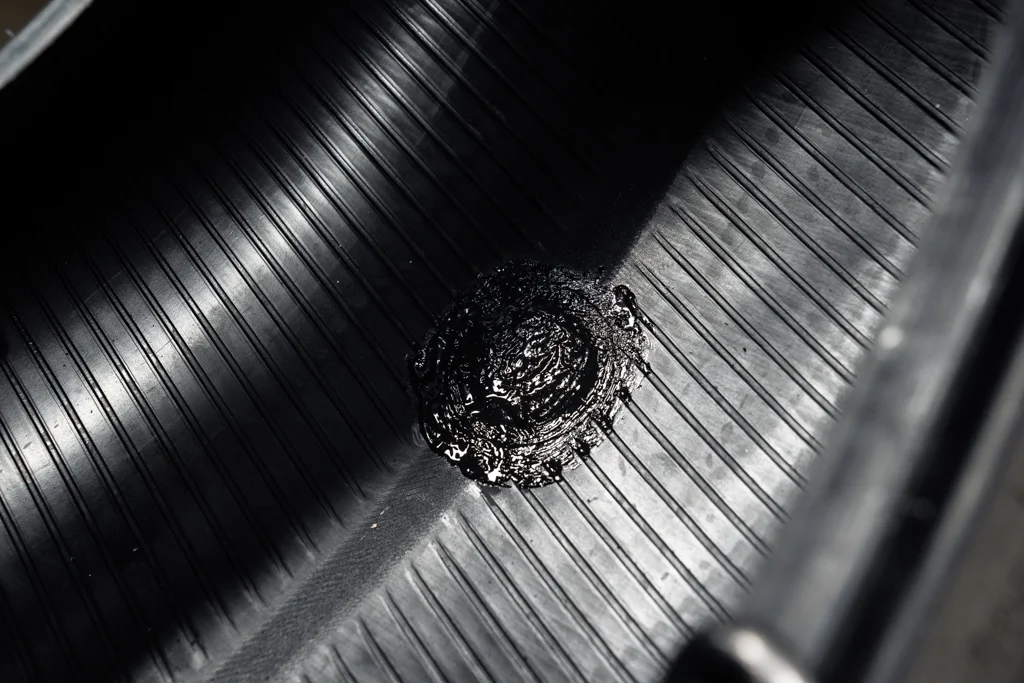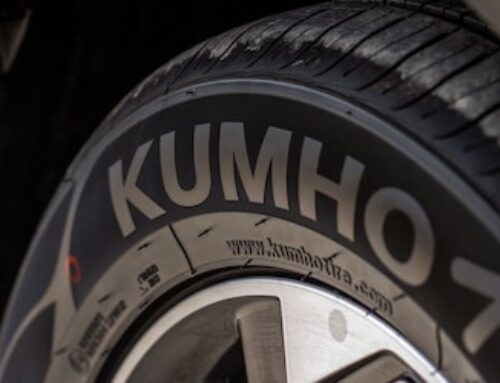Table of Contents
Today we’re exploring one of the easiest and most budget-friendly ways of repairing a flat tire—getting it patched. Keep reading to find out how much a tire patch will cost you, and get a few handy tips from a tire pro.

What is a tire patch?
A tire patch is a small disc of rubber that is glued to the inside of the inner tire liner. If you’ve ever put a patch on a pool floaty or bicycle tire, the process is essentially the same. First, the tire will need to be removed from the wheel. The area around the puncture must be sanded to create a rough patch on the tire surface. Then the tire patch is glued to the surface of the hole. And voila! You have a patched tire.
How much does a tire patch cost at repair shops?
Tire patch costs range between $30 and $60 and take up to 30 minutes. Note that the actual repair time is only 30 minutes, but you might have to wait if the mechanic is busy. The tire patch cost is affected by labor costs, meaning if you live in a more expensive area, you should expect your tire patch cost to be toward the upper end of the range. Tire patching is a simple but labor-intensive process, as the tire needs to be removed, and a few specialty tools are needed.
Professional tire repair options
Typically a licensed repair shop will have several options for you: patches, plugs, or even replacing the whole tire. Most mechanics consider a patch the superior option; it is less likely to leak and will probably last longer than a plug. The newer your tires are (and the fewer miles you have on them), the better the patch will hold. Replacing the whole tire might be best if your tires are very old or worn.
Patching a tire in a shop: 6 steps

Step 1. Finding the leak
The first step in tire repair is finding where the air is escaping. Sometimes this is quite obvious as a large nail, screw, piece of glass, etc., protrudes from the tread. But often times tire repairs are not so simple, as the puncture is hard to find. A tire repair specialist may use the “soapy water test” to find the puncture. A technician will fill the tire with air and then spray it down with soapy water. When the escaping air hits the soapy bubbles, it gives off a lot of bubbles.
Step 2. Removing the tire from the rim

Most auto and tire shops will have a special machine for this as it is very difficult and labor-intensive. The machine is called, not surprisingly, a tire machine. It is highly recommended not to try this at home with your hands or hand tools. You can possibly damage the TPMS sensor in the valve stem, and you will likely end up sweaty, swearing, and frustrated. A tire is a formidable foe.
Step 3. Buffing the tire

Once the tire is removed, a technician will locate the puncture on the inside of the tire. Once they have done this, they will “buff” the rubber around the puncture using a tire buffer. A tire buffer is like a piece of sandpaper on the end of a power drill, roughing up (or buffing) the rubber. This increases the surface area and improves the ability of the adhesive to stick to the surface.
Step 4. Applying the adhesive

The next step is to apply adhesive glue to the area that has been buffed already. A common choice for this is rubber cement. Tire patches stick well to rubber cement. The technician at your tire shop will want to apply the rubber cement liberally around the entire area to ensure that the tire patch is covered by glue.
Step 5. Applying the tire patch

Once the glue has been put on, it’s time to lay the patch on. This will be done with the puncture hole directly in the center of the tire patch. A technician will do this with care, as any wrinkles, folds, or deformations in the patch might cause it to leak in the future.
Step 6. Pressing the patch on

Once the patch has been laid over the adhesive, it must be pressed on. This can be done with various tools, but a patch roller or tire roller is the most common. It will roll a wheel across the patch’s surface to ensure it is pressed firmly on.
Step 7. Sealant application

That’s it! This may seem like a lot, but your average mechanic can do it in less than 30 minutes. Once your tire and wheel are back on, you are good to go!
When can a puncture not be patched?

Not all flat tires can be repaired. Repair shops will not fix tire punctures on the tire sidewall or shoulder. This is because damage to a tire’s sidewall weakens the structure of the tire, and it will be unsafe to drive on such a tire, even after the repair. The tire shoulder is rounded, making it difficult for a patch or plug to stick correctly and likely leak in the future. If you’re unfortunate enough to have your tire punctured in either of these places, most tire shops recommend getting a new tire.
Punctures that are too large
A damaged tire can not be patched or plugged with a too-large puncture. Any punctured tire with a hole larger than approximately one inch will not be able to be repaired. This is because the patch will not be able to cover such a large area and will break. One more thing: if the size of the damage exceeds 5 mm, instead of a patch, you should use a mushroom-type patch to protect the tire carcass from moisture and dirt. Otherwise, moisture and dirt can get into the carcass, which may cause plies to split.
Don’t let the best tire deals & tips roll by!
Sign up for our newsletter
Older tires
If a tire has been patched several times before, it may not be able to be patched again. The overall structure and integrity of the tire are weakened, and any additional patches will mean that one or more patches will begin to leak or burst.
Additionally, if your tire is quite old, with a very worn tread, it may also be in your best interest to replace it. After all, it doesn’t make sense to patch or plug a tire you will need to replace in a few months.
Tire blowouts
Unfortunately, if your tire experiences a blowout, it will be impossible to have that tire repaired. A blowout is an extreme situation and is much more serious than common nail punctures. No amount of tire patches will be able to save a blowout. If this happens, you must purchase one or more new tires.
How long does a tire patch last?

Many people believe that a patched tire is only temporary and must be replaced regularly, but that is not the case. A professional patch can last up to ten years or 25,000 miles if the tire is repaired correctly. Tire patching is a very effective solution for a flat tire. A tire patch will likely last for the remaining life of the tire.
What to do if you have a flat tire?
If you find yourself with a flat tire or your TPMS warns you that you are losing tire pressure, here is a step-by-step guide to what you should do.
- Pull over: Once you realize you have a flat tire or are rapidly losing tire pressure, your first step should be to pull over. In this situation, it’s best to play it safe and turn on your hazard lights.
Driving on a flat tire is not only dangerous, but it will damage the tire further. Driving on a flat tire for too long can make the puncture too large to be patched, or more likely. It will damage the tire’s sidewall. An auto shop might suggest a new tire if the sidewall is damaged. - Put on the spare tire: You must drive to a repair shop to have your tire repaired. Use the jack and tire iron to remove the lug nuts of the faulty tire and attach the spare tire. The tire manufacturers association recommends not driving too long or too fast on a spare; a good general rule of thumb is to keep your vehicle under 50 miles per hour and not drive for more than 50 miles.
If you don’t have a spare tire, you might want to keep a can of tire sealant in your car. These canisters will inflate your tire and coat the inside in a sealing material. This is only a temporary solution, but it will be enough to drive on for a short period. - Go to a repair shop: Most shops will be able to repair tire punctures with ease. Patching tires is usually the preferred method. Once your tire is patched, you should be good to go!
Frequently Asked Questions
Is it safe to get a tire patched?
Yes, if you get a tire patched by a professional, it is very safe and can add thousands of miles and years to the life of your tire. Packing a tire by yourself is not recommended, as it is a difficult process and can be unsafe if done incorrectly.
Which is better, a plug or a patch?
Both options are very effective and will last for several years. However, most mechanics will choose to patch a tire if they can. This is because a tire patch is less likely to leak. The difference between a plug and tire patch cost is usually only a few dollars.
Can I patch a tire at home?
No, we don’t recommend doing it unless you have professional tire mechanic experience! Although a tire patch kit is fairly inexpensive to buy online ($14-25 on Amazon), they usually do not come with the proper and complete tools. You will need the actual patch itself and appropriate glue, such as rubber cement, a tire buffer, and a patch roller to patch a tire. Not to mention that it is extremely difficult to remove a tire and put it back on. If the tire is not put back on correctly, it can impact your driving safety.
Plugging a tire at home is much easier and more straightforward. A tire plug kit can be purchased online for as little as $12-20 and will come with 4-6 plugs.
Buying a tire patch kit online: what to expect?
If you still prefer to patch a tire on your own, you can find small kits for tire patching online or at some auto shops. Unfortunately, the kits usually only come with some of the necessary tools that you’ll need. Tire patch kits usually come with patching material only. But in addition to the patches, you will need an adhesive such as rubber cement, a buffer to buff the inside of the tire liner, and a patch roller.
Is it ok to drive on a flat tire?
No. It is best to pull over as soon as you realize your tire has a puncture so that you do not further damage your tire. Please put on the spare and immediately go to your local auto shop to repair it.









